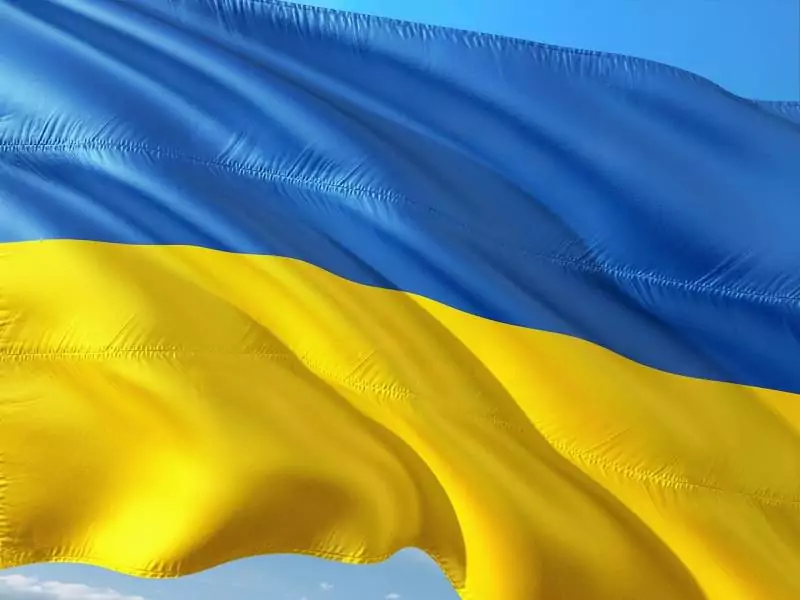Amazfit Bip U è lo smartwatch “da comprare”: costa meno di 36€
Faster Frontiers: How Does 5G Technology Affect B2B Marketers?


How will 5G technology change the way B2B marketers tell brand stories, and what new opportunities will the speedier forthcoming mobile standard offer?
With impacts that will range from slight in some areas to deeply significant in others, the upcoming rollout of 5G cellular network technology is poised to change how the world of B2B marketing operates.
“5G will unlock a raft of new applications: IoT, process management, and utility metering for enterprise; and augmented reality (AR) and virtual reality (VR), immersive haptic and 3D holographic experiences for consumers,” Kevin L. Jackson, CEO at GC GlobalNet, recently observed.
Let’s take a brief look at what these changes are, and what B2B marketers can expect as we enter a new frontier of freedom from speed limitations in a world that’s more mobile than ever.
[bctt tweet=”“5G will unlock a raft of new applications: IoT, process management, and utility metering for enterprise; and augmented reality (AR) and virtual reality (VR), immersive haptic and 3D holographic experiences for consumers.” — @Kevin_Jackson” username=”toprank”]1 — New Frontiers Through Freedom From Speed Concerns
Continuing a decades-long evolution in mobile device speed, when the 5G cellular data transmission standard is widely available, it will allow B2B marketers and professionals of all sorts to worry less about limitations imposed by the file size of digital assets — including today’s 4K-and-beyond video and virtual reality (VR) and augmented reality (AR)-related data — and instead spend more time focusing on the creative process of digital storytelling.
The speed increase 5G brings is a significant one, and will finally remove some of the last remaining hurdles digital marketers have faced as they craft ever more compelling and immersive online experiences – and the accompanying growth in file sizes and required data transfer times.
I’ve been involved in digital communications for over 38 years, and have watched online speeds grow from 110 and 300 baud modems to ever-faster technologies, and with each click up on the transfer speed dial, what can be achieved has also grown.
Looking at some of the milestones along the way can help put into perspective just what type of speed increases B2B marketers can expect from 5G offerings coming out from major telecommunications firms in the near future.
Here’s a rough overview of the estimated percentage in speed increase seen with some of the changes that have taken place in online data transfer rates since I first went online in 1984 when I began operating a computer bulletin board system (BBS):
- 110 baud to 300 baud: 172.7% increase
- 300 baud to 1200 baud: 300% increase
- 1200 baud to 2400 baud: 100% increase
- 2400 baud to 9600 baud: 300% increase
- 9600 baud to 14.4K baud: 50% increase
- 14.4K baud to 19.6K baud: 36.1% increase
- 19.6K baud to early ADSL: 3981.6% increase
- ASDL to HDSL: 92.5% increase
- HDSL to 2G: 97.4% decrease
- 2G to early 3G: 260% increase
- Early 3G to later 3G:19344% increase
- Later 3G to 4G: 257% increase
- 4G to 5G: 9900% increase
Among these decidedly simplified calculations of basic speed changes over the years, the eventual implementation of 5G technology will represent one of the biggest jumps in download speeds. For the curious, the speed increase we’ve seen from 110 baud in 1984 to 5G in 2022 is a whopping 9,259,260,000 percent boost.
[bctt tweet=”“The speed increase 5G brings is a significant one, and will finally remove some of the last remaining hurdles digital marketers have faced as they craft ever more compelling and immersive online experiences.” — Lane R. Ellis @lanerellis” username=”toprank”]2 — Ushering In Even More Mobile Migration
Another key aspect that 5G technology will bring to B2B marketing is its power to shift even more people to making more of their online lives based on a mobile cellular foundation.
5G is certainly poised to usher in new migration from reliance on land-based data transmission technologies including traditional Internet Service Provider (ISP) fiber, cable, DSL, and other non-mobile formats, to greater adoption of purely cellular communications.
When it is eventually implemented to the full capacity of the standard, 5G technology will finally overcome one of the bigger hurdles in humankind’s use and reliance on traditional wired connections, with wireless transfer rates swift enough to conquer the needs of the vast majority of B2B marketers.
3 — Greater Mobile-First Search Advantages
For years Google and to a lesser extent other search engine firms have espoused the importance of tailoring online experiences specifically for mobile audiences, and with the rollout of 5G, the B2B landscape may soon find itself in a truly mobile-first position.
When this happens, B2B brands may find a quicker path to some of the mobile-first search advantages than many had envisioned.
For B2B marketers, the search engine optimization (SEO) advantages of being compliant with Google’s mobile-first initiatives form a naturally harmonious pairing with the benefits of 5G technology and what it will bring to the table.
Google’s nudge to get website owners to implement a mobile-first mindset has been a work in progress for many years now, and the migration continues. Along the way it’s led to some noteworthy changes in how we use the web and communicate.
“The ranking advantage gained by mobile-optimized sites spurred the adoption of responsive web design on a larger scale,” Matt G. Southern, lead news writer at Search Engine Journal, recently noted in a look at the role mobile considerations still play when it comes to Google.
[bctt tweet=”“The ranking advantage gained by mobile-optimized sites spurred the adoption of responsive web design on a larger scale.” — Matt G. Southern @mattgsouthern” username=”toprank”]What Does It All Mean For B2B Marketers In A 5G World?
With more speed, greater numbers of mobile users, and a swifter route to mobile-first search advantages, 5G technology is set to deliver important new opportunities to B2B marketers.
While configuring my rudimentary 300 baud modem back in 1984 to try eking out an extra few bits per second through the phone lines, I never would have guessed that in 2022 the world would be set to blaze through mountains of data with the speeds that 5G brings.
Worlds of new creative possibilities for B2B marketers open up when previous technical limitations can be set aside, thanks to advantages such as those that 5G is set to bring — and although it’s only one step along the way, it’s a mammoth one.
Crafting gold medal caliber B2B marketing that elevates, gives voice to talent, and humanizes with authenticity takes considerable time and effort, which is why an increasing number of firms are choosing to work with a top digital marketing agency such as TopRank Marketing. Contact us to learn how we can help, as we’ve done for over 20 years for businesses ranging from LinkedIn, Dell and 3M to Adobe, Oracle, monday.com and others.
The post Faster Frontiers: How Does 5G Technology Affect B2B Marketers? appeared first on B2B Marketing Blog – TopRank®.
Motorola E7 power dura TANTISSIMO e costa meno di 150€
DragonChase: missione accorciata e cambio di ruolo per Samantha Cristoforetti
| Credit: io, |
| Da sinistra: Robert Hines, Samantha Cristoforetti, Jessica Watkins e Kjell Lindgren. Foto JSC2022e011014, datata 7 febbraio 2022 (NASA su Flickr). |
Questo è il testo integrale dell’annuncio di ESA:
In brief
In May 2021 it was announced that ESA astronaut and Dragon Crew-4 mission specialist Samantha Cristoforetti would serve as Commander of International Space Station (ISS) Expedition 68a. As part of normal vehicle scheduling, the Space Station flight programme was recently updated adjusting the upcoming crew rotation for Crew-4 and Crew-5, resulting in a shorter mission for Crew-4. ISS Expedition 68a will now take place after Samantha’s departure from the Station.
In-depth
Throughout her time on board, Samantha will have the role of lead of the United States Orbital Segment (USOS), which includes the US, European, Japanese and Canadian modules and components of the Space Station.
L’Agenzia Spaziale Italiana ha pubblicato un comunicato più ampio che spiega meglio la situazione e include una dichiarazione dell’astronauta:
[…] Le opportunità di volo e i ruoli a bordo della Stazione spaziale internazionale vengono assegnati ai membri dell’equipaggio dal Multilateral Crew Operations Panel (MCOP), costituito dai rappresentanti di ESA, NASA, Roscosmos, l’Agenzia giapponese per l’esplorazione aerospaziale (JAXA) e l’Agenzia spaziale canadese (CSA). L’ESA è rappresentata dal Capo del Centro Astronauti Europeo Frank De Winne.
Secondo Frank De Winne, non è raro che il piano di volo venga modificato dato che il traffico della Stazione spaziale Internazionale deve essere attentamente coordinato in base alle esigenze operative. «Questo significa che Samantha Cristoforetti non sarà più comandante della Stazione spaziale internazionale, ma il Panel la conferma la sua fiducia in lei come leader. Continuerà a essere completamente addestrata per la posizione di comandante ed è inteso che, nel caso in cui il piano di volo dovesse tornare a quello iniziale, Samantha assumerebbe questo ruolo».
Samantha Cristoforetti commenta così il cambiamento di piani: «Come membri dell’equipaggio, siamo pronti a dare il nostro contributo come necessario. È un onore per me essere a capo dello USOS, e questo ruolo comprende la maggior parte dei compiti che avrei assunto come comandante. Riconosco tuttavia che molte persone in Europa, in particolare molte donne, hanno tratto ispirazione dalla prospettiva di avere la prima donna europea comandante dell’ISS. Mi rammarico che questo non accadrà durante la mia missione, ma stiamo selezionando una nuova classe di astronauti e astronaute e sono certa che questa comprenderà donne molto preparate e determinate che saranno pronte, in un futuro non così lontano, ad assumere ruoli di leadership».
Il Direttore dell’Esplorazione Umana e Robotica dell’ESA David Parker afferma che la nomina di Samantha Cristoforetti a capo dell’USOS è una conferma delle qualità che porta con sé sulla Stazione Spaziale.
«Come astronauta al secondo volo e leader competente, la conoscenza, l’atteggiamento sereno e la precedente esperienza di Samantha Cristoforetti in orbita sono una vera risorsa per l’equipaggio. È un’eccellente figura di riferimento per coloro che attualmente partecipano al processo di selezione degli astronauti dell’ESA, in particolare per le nostre candidate, che desiderano rappresentare l’Europa nello spazio».
Le conseguenze spaziali dell’invasione russa: il punto della situazione
Ultimo aggiornamento: 2022/03/02 22:55.
Di fronte alle morti, alle sofferenze e alla distruzione che stanno colpendo l’
Questa spinta viene solitamente applicata dai motori di manovra del modulo Zvezda, che fa parte della sezione russa della Stazione, oppure dai motori di una navetta Progress attraccata alla Stazione. In questo senso è corretto dire che il mantenimento della quota orbitale normalmente dipende dai russi. Tuttavia il reboost può essere effettuato anche da veicoli non russi. Lo ha fatto in passato il veicolo europeo ATV (ora non più operativo) e nel 2018 questa capacità è stata dimostrata sperimentalmente da un veicolo cargo Cygnus ed è poi diventata operativa di recente con un nuovo reboost.
Fra l’altro, la Cygnus viene messa in orbita da un vettore Antares, il cui primo stadio è costruito in Ucraina e ha motori russi, mentre il secondo stadio è statunitense e la Cygnus ha molti componenti strutturali europei (Scott Manley). Sventolii di bandiere a parte, le interdipendenze spaziali sono tante.
La situazione è leggermente più delicata per un altro tipo di manovra, ossia lo spostamento per evitare collisioni con detriti spaziali. Qui la dipendenza dai russi è più forte, ma se i rapporti di cooperazione dovessero davvero deteriorarsi fino a questo punto ci sarebbe la possibilità di utilizzare i motori di manovra delle capsule cargo Dragon o quelli delle capsule con equipaggio Crew Dragon. Ovviamente si tratterebbe di un’operazione nuova, da collaudare con estrema cautela, ma fattibile, e la NASA ha già dichiarato di aver esplorato concretamente questa ipotesi.
Per ora, comunque, in concreto non ci sono cambiamenti alla situazione di bordo. La Progress 79 russa ha effettuato regolarmente un reboost a fine febbraio. Sulla situazione personale a bordo bocche cucite: i due russi, Anton Shkaplerov e Pyotr Dubrov, i quattro statunitensi Mark Vande Hei, Kayla Barron, Raja Chari e Thomas Marshburn e l’europeo Matthias Maurer non commentano gli eventi. Kathy Lueders, associate administrator della NASA per le attività spaziali, ha detto che le operazioni della Stazione non sono cambiate: “Non stiamo ricevendo indicazioni, a livello operativo, che le nostre controparti non siano impegnate a continuare l’attività della Stazione… operiamo esattamente come operavamo tre settimane fa” (Spacenews).
Non ci sono indicazioni, al momento, di alcun cambiamento nel lancio dell’astronauta europea Samantha Cristoforetti insieme agli statunitensi Kjell Lindgren, Robert Hines e Jessica Watkins a bordo di una capsula Crew Dragon previsto per il 15 aprile (ma ESA ha annunciato poco fa un accorciamento della loro missione che implica che Samantha non diventerà comandante dell’intera Stazione ma solo lead del segmento non russo). Nessun cambiamento è annunciato anche per il lancio della Soyuz MS-21 russa da Baikonur con tre cosmonauti russi (Oleg Artemyev, Denis Matveev e Sergey Korsakov) verso la Stazione il 18 marzo e per il rientro di Shkaplerov e Dubrov il 28 marzo.
Forse la situazione più delicata è quella dello statunitense Mark Vande Hei, che in teoria dovrebbe rientrare sulla Terra insieme a Shkaplerov e Dubrov su un veicolo Soyuz russo (MS-19), atterrando in Kazakistan. Vande Hei e Dubrov avranno trascorso in tutto 355 giorni continuativi nello spazio.
Per contro, sembrano esserci problemi per quanto riguarda il braccio robotico europeo ERA che è installato a bordo del modulo russo Nauka della Stazione: le sanzioni internazionali potrebbero rendere impossibile la collaborazione russo-europea, rendendo problematica la manutenzione e l’evoluzione del modulo Nauka, che dipende in gran parte da questo braccio telecomandato.
—
Le cose vanno meno bene allo spazioporto europeo di Kourou, nella Guyana francese; i russi hanno deciso di richiamare il loro personale presente e di sospendere le attività del vettore Soyuz che avrebbe dovuto portare in orbita una coppia di satelliti di navigazione europei Galileo ad aprile.
Un altro atto concreto derivante dall’invasione russa dell’Ucraina è l’interruzione delle attività del telescopio a raggi X eRosita, che è tedesco, a bordo del satellite di ricerca scientifica russo Spektr-RG, situato a un milione e mezzo di chilometri dalla Terra.
Anche un’altra collaborazione europea con la Russia è ora fortemente compromessa: un vettore russo Proton avrebbe dovuto lanciare la missione robotica ExoMars verso Marte a settembre dal cosmodromo di Baikonur, e la sonda avrebbe dovuto usare un modulo russo, Kazachok, per l’atterraggio su Marte, ma l’Agenzia Spaziale Europea ha dichiarato che questo lancio è ora “molto improbabile”. Le leggi inesorabili della meccanica orbitale implicano che la missione dovrà aspettare altri due anni prima della prossima finestra di lancio.
Sul piano commerciale, inoltre, Rogozin ha dichiarato inizialmente che se la Russia non riceverà entro il 4 marzo prossimo garanzie che i satelliti commerciali per telecomunicazioni OneWeb non verranno usati per scopi militari, il loro lancio a bordo di un vettore Soyuz, previsto per il 5 marzo da Baikonur, non avverrà. Poi RIA Novosti ha scritto che Roscosmos ha chiesto anche il ritiro del governo britannico dall’azionariato di OneWeb.
Il problema di fondo, qui, è che il programma spaziale russo non può permettersi di perdere queste commesse. Rogozin può strillare finché vuole e annunciare improbabili fughe in avanti autarchiche, ma la realtà dei fatti è che la Russia non ha soldi per le missioni spaziali e per mantenere le infrastrutture necessarie per effettuarle. Se la politica impone a Roscosmos di sbattere la porta in faccia a tutti, l’agenzia spaziale russa e tutto lo storico apparato che ha contribuito così tanto alla storia dell’esplorazione spaziale rischiano di chiudere definitivamente.
—
17.30. Roscosmos.ru è inaccessibile. Anonymous afferma di aver preso il controllo del centro di controllo dell’agenzia spaziale russa, ma non ci sono conferme. RIA Novosti parla di un attacco hacker al centro di controllo ma non conferma che abbia avuto successo.
Questo articolo vi arriva gratuitamente e senza pubblicità grazie alle donazioni dei lettori. Se vi è piaciuto, potete incoraggiarmi a scrivere ancora facendo una donazione anche voi, tramite Paypal (paypal.me/disinformatico) o altri metodi.
Bitcoin è più volatile che mai a causa della guerra in Ucraina
HermeticWiper: Il virus cibernetico che spaventa il mondo
LE DUE GUERRE

di Cristina Melchiorri Ucraina. Non abbiamo ancora lasciato alle spalle la guerra al COVID, che un nuovo conflitto esplode alla nostra porta. La crisi sanitaria ha avuto una grande incidenza…
L’articolo LE DUE GUERRE scritto da Paolo Brambilla proviene da Assodigitale.
TAG Bulletin: Q1 2022
This bulletin includes coordinated influence operation campaigns terminated on our platforms in Q1 2022. It was last updated on February 28, 2022.
January
- We terminated 3 YouTube channels as part of our investigation into coordinated influence operations. The campaign uploaded content in Arabic that was critical of former Sudanese president Omar al-Bashir and supportive of the 2019 Sudanese coup d’état. Our findings are similar to findings reported by Meta.
- We terminated 1 AdSense account and 1 Play developer as part of our investigation into coordinated influence operations linked to Turkey. The campaign was sharing content in Arabic that was about news and current events in Libya. Our findings are similar to findings reported by Meta.
- We terminated 42 YouTube channels and 2 Ads accounts as part of our investigation into coordinated influence operations linked to Iraq. The campaign uploaded content in Arabic that was in support of the Iraqi Harakat Hoquq party. We received leads from Mandiant that supported us in this investigation.
- We terminated 4 YouTube channels, 2 AdSense accounts, and 1 Blogger blog and blocked 6 domains from eligibility to appear on Google News surfaces and Discover as part of our investigation into reported coordinated influence operations linked to Belarus, Moldova, and Ukraine. The campaign was sharing content in English that was about a variety of topics including US and European current events. We believe this operation was financially motivated.
- We terminated 4361 YouTube channels as part of our ongoing investigation into coordinated influence operations linked to China. These channels mostly uploaded spammy content in Chinese about music, entertainment, and lifestyle. A very small subset uploaded content in Chinese and English about China and U.S. foreign affairs. These findings are consistent with our previous reports
Cuffie Wireless Jabra Elite Active 5t a metà prezzo!
SQL Buddy: gestire il DB di WordPress dalla dashboard
Helping Ukraine
The Russian invasion of Ukraine is both a tragedy and a humanitarian disaster in the making. The international community’s response to this war continues to evolve and governments are imposing new sanctions and restrictions.
Our teams are working around the clock to support people in Ukraine through our products, defend against cybersecurity threats, surface high-quality, reliable information and ensure the safety and security of our colleagues and their families in the region.
Here are a few of the actions we’re taking.
Providing support from Google.org
Together, Google.org and Google employees are contributing $15 million in donations and in-kind support to aid relief efforts in Ukraine, including $5 million so far from our employee matching campaign and $5 million in direct grants. We’re also contributing $5 million in advertising credits to help trusted humanitarian and intergovernmental organizations connect people to important sources of aid and resettlement information.

According to the Polish Red Cross, since Thursday last week over 300,000 people have arrived in Poland. (photo credit: Red Cross)
Updating Search and Maps in Ukraine
We’ve launched an SOS alert on Search across Ukraine. When people search for refugee and evacuation information, they will see an alert pointing them to United Nations resources for refugees and asylum seekers. We’re working with expert organizations to source helpful humanitarian information as the situation unfolds.
And after consulting with multiple sources on the ground, including local authorities, we’ve temporarily disabled some live Google Maps features in Ukraine, including the traffic layer and information about how busy places are, to help protect the safety of local communities and their citizens. We’ve also added information on refugee and migrant centers in neighboring countries.
Expanding security protections
Our security teams are on call 24/7. Russia-backed hacking and influence operations are not new to us; we’ve been taking action against them for years. Over the past 12 months alone, we’ve issued hundreds of government-backed attack warnings to people in Ukraine using products like Gmail. We’ve been particularly vigilant during the invasion and our products will continue to automatically detect and block suspicious activity.
While we have not seen meaningful changes in the levels of malicious activity in this region overall, our Threat Analysis Group (TAG) has seen threat actors refocus their efforts on Ukrainian targets. For example, we’ve seen the attackers behind the GhostWriter threat group targeting Ukrainian government and military officials. We blocked these attempts and have not seen any compromise of Google accounts as a result of this campaign.
We also automatically increased Google account security protections (including more frequent authentication challenges) for people in the region and will continue to do so as cyber threats evolve. Our Advanced Protection Program — which delivers Google’s highest level of security — is currently protecting the accounts of hundreds of high-risk users in Ukraine. And “Project Shield,” a service providing free unlimited protection against Distributed Denial of Service attacks, is already protecting over 100 Ukrainian websites, including local news services.
Promoting information quality
In this extraordinary crisis we are taking extraordinary measures to stop the spread of misinformation and disrupt disinformation campaigns online.
Beginning today, we’re blocking YouTube channels connected to RT and Sputnik across Europe. This builds on our indefinite pause of monetization of Russian state-funded media across our platforms, meaning media outlets such as RT are not allowed to monetize their content or advertise on our platforms.
We have also significantly limited recommendations globally for a number of Russian state-funded media outlets across our platforms. And in the past few days, YouTube has removed hundreds of channels and thousands of videos for violating its Community Guidelines, including a number of channels engaging in coordinated deceptive practices.
Of course we are working to not just reduce the reach of unreliable information, but also to make reliable and trustworthy information readily available. Our systems are built to prioritize the most authoritative information in moments of crisis and rapidly-changing news. When people around the world search for topics related to the war in Ukraine on Search or YouTube, our systems prominently surface information, videos and other key context from authoritative news sources.
Helping our colleagues in Ukraine
We remain extremely concerned for the safety and wellbeing of our Ukrainian team and their families. Our local Security and People Operations teams have been working since January to provide help, including physical security support, paid leave, assistance options and reimbursement for housing, travel and food for anyone forced to leave their homes.
Operating our services in Russia
We are committed to complying with all sanctions requirements and we continue to monitor the latest guidance. As individuals, regions and institutions like banks are sanctioned, products like Google Pay may become unavailable in certain countries.
Most of our services (like Search, Maps and YouTube) currently remain available in Russia, continuing to provide access to global information and perspectives.
We will continue to monitor the situation and take additional actions as needed – and we join the international community in expressing sincere hope for a return to a peaceful and sovereign Ukraine.











